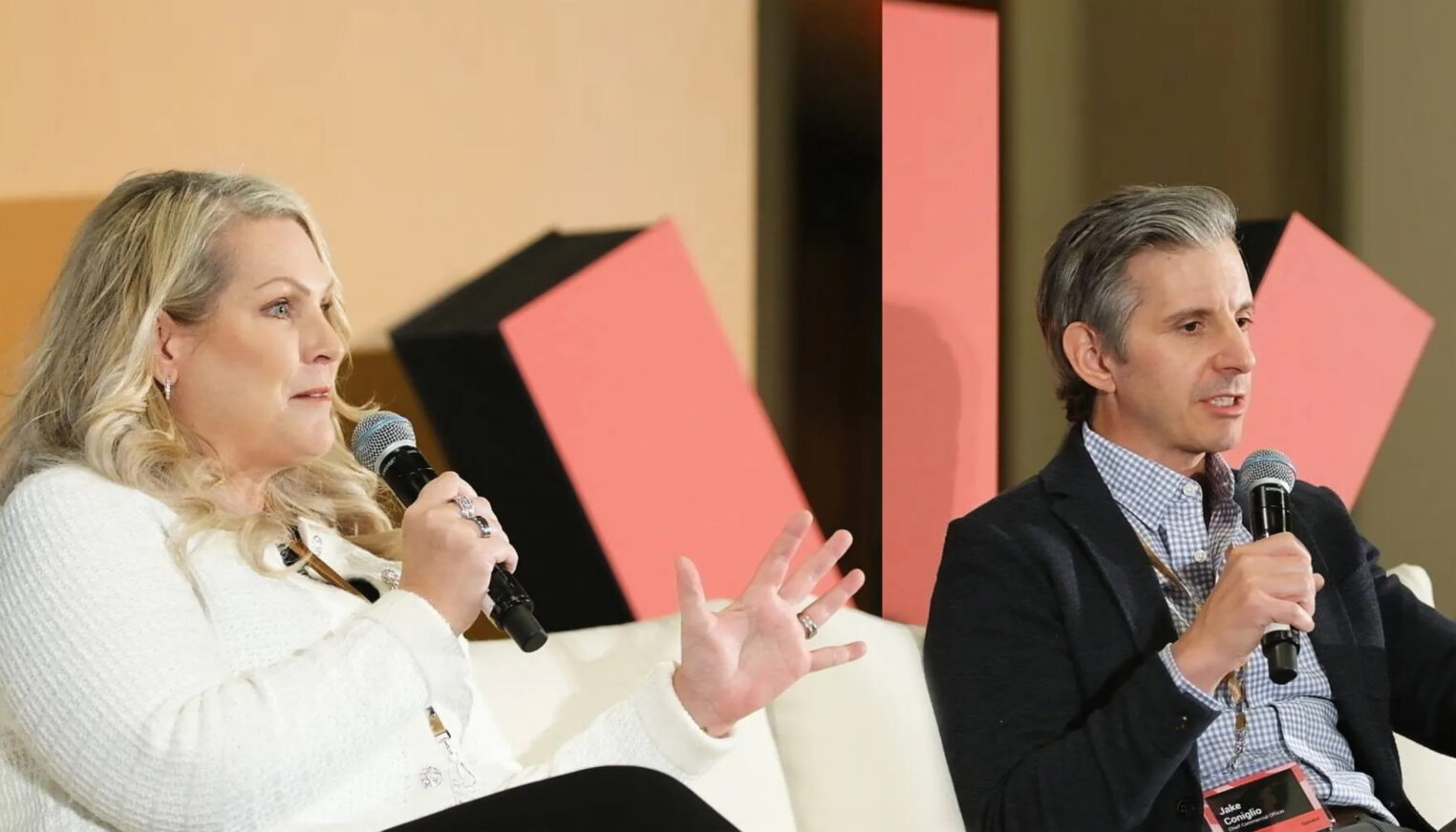At the latest Together with Collective Health session, Rob Andrews, CEO of the Health Transformation Alliance and former 10-term U.S. Congressman, joined us for a compelling discussion on the evolving landscape of healthcare policy. In a conversation that covered everything from political influence to pharmaceutical pricing, Andrews provided keen insights into the challenges and opportunities ahead for self-insured employers.
The key takeaways for benefits leaders:
- Stay informed about evolving FTC regulations on PBMs and their impact on pricing and transparency.
- Prepare for the potential surge in gene therapy treatments, particularly for sickle cell and genetic diseases, and begin planning for their inclusion in healthcare plans.
- Watch for the outcome of key court cases, like the Braidwood case, that may impact preventive service coverage and overall healthcare benefits strategy.
- Prepare for potential changes in Medicaid and other government healthcare programs that may affect employee coverage.
The Voices in the Room
Robert Andrews and Dr. Ari Hoffman provided insights into the evolving healthcare policy landscape and its implications for employers and health plans.

Robert Andrews
CEO of Health Transformation Alliance and former Member of the U.S. House of Representatives

Dr. Ari Hoffman
Head of Product and Chief Clinical Officer at Collective Health
Trump’s Grip and the Healthcare Landscape
Andrews highlighted the significant influence former President Trump has over his party, drawing comparisons to Lyndon Johnson’s control in 1965. This political reality, he argued, has profound implications for healthcare policy, shaping decisions around transparency, Medicaid cuts, and pharmaceutical pricing.
“Do not understate for a nanosecond how much influence this president has over his own party and therefore has over the House and Senate.”
Transparency: A Step in the Right Direction
One of the most pressing themes in today’s healthcare discussion is transparency—something Andrews strongly supports. He applauds efforts from the Trump administration in pushing for transparency during his first term, a sentiment that continues under the Biden administration. While Andrews acknowledges that the latest executive orders lack the "enforcement teeth" he would like, he believes that bringing visibility to healthcare pricing is a step forward.
"More consumers and healthcare payers need to know what they’re really paying for and why," Andrews says. This echoes the belief that more transparency will ultimately lead to better decision-making and, perhaps, lower costs for consumers. However, Andrews is quick to caution that while transparency is valuable, it’s only one part of the puzzle.

The Looming Threat of Medicaid Cuts
The biggest concern, especially for self-insured employers, is the likely cuts to Medicaid and marketplace exchange subsidies. According to Andrews, we can expect a significant reduction in Medicaid benefits, which will lead to more uninsured or underinsured people showing up at emergency rooms and other providers. He emphasizes that while federal law requires hospitals to treat patients regardless of their insurance status, the financial strain on hospitals, especially those in states with lower Medicaid benefits, will likely push costs onto commercial payers.
“Hospital CFOs are going to face enormous pressure,” Andrews explains. “With Medicaid reimbursement shrinking, the costs have to be made up somewhere—and that ‘somewhere’ is likely to be you, the self-insured employers.”
This means that, for those managing employee benefits, cost pressures are set to increase. Andrews predicts that the costs will trickle down to employers in the form of higher premiums and increased out-of-pocket expenses for employees.
Decentralization: The Double-Edged Sword
When it comes to the idea of decentralization in healthcare, Andrews presents a complex picture. On the one hand, shifting more responsibility to states could allow for tailored healthcare solutions that fit regional needs. On the other hand, decentralization could deepen the divide between states that are better equipped to handle Medicaid and those that are not.
"Decentralization could mean worse outcomes for employees in states with limited Medicaid benefits, like Alabama or Louisiana," he warns. "Employees will still get sick, accidents will still happen, and when they do, hospitals will look to employers to cover the cost."
For self-insured employers, this means being more strategic in providing value-based care. Andrews encourages employers to identify and define the highest-value benefits, such as early cancer detection or managing high-risk pregnancies, to reduce long-term healthcare costs.

Preventive Care and the Potential Fall of Essential Benefits
A pressing issue in healthcare right now is the fate of preventive care services, which are under scrutiny. Andrews, who was involved in writing the Affordable Care Act, highlighted that preventive services are at risk as legal challenges continue. The Braidwood versus RA case, which will soon be heard by the Supreme Court, could lead to significant changes in how preventive services are covered.
“If the Supreme Court deems the preventive task force’s recommendations unconstitutional, it will force employers to find their own justifications for offering these services,” he explains. “That’s not necessarily a bad thing, but it adds another layer of complexity.”
Andrews remains cautiously optimistic about the outcome, suggesting that the Court will likely uphold the current system. After all, as he points out, judicial conservatives like Chief Justice Roberts are typically reluctant to disrupt the status quo—especially when it impacts public health.
Pharmaceutical Pricing: The Next Frontier
When it comes to pharmaceutical pricing, Andrews is blunt about the challenges ahead. The emergence of gene therapies and costly drugs like GLP-1s, which have shown positive health outcomes but at a significant cost, will force a massive shift toward value-based pricing.
“GLP-1s are a shock to the system. While they may reduce ER visits and ICU days, the cost of these drugs is ultimately unsustainable,” he states. “It’s negative ROI, but we’re still covering them for a lot of reasons.”
This presents a larger issue: the growing need for a more sustainable and value-driven approach to pharmaceutical pricing. As the industry shifts, self-insured employers may need to reevaluate how they cover these high-cost treatments. Andrews envisions a world where gene therapies and similar treatments become more common, and value-based pricing becomes the standard.
Advancing Gene Therapy and the Impact on Healthcare Costs
At the heart of the conversation about future healthcare solutions, particularly around gene therapies, there’s a blend of hope and realistic concern about costs. The emergence of gene therapies has brought life-saving treatments to the forefront, but the economics of these treatments continue to challenge the healthcare industry. Rob Andrews, a key speaker, encapsulated this tension by sharing a deeply personal story about the breakthrough of gene therapy, which has significantly impacted rare diseases.
“I just like telling this story… A few years ago, a gene therapy was used in vitro on a child before she was born. The child was born and is now two and a half years old, showing no symptoms of a disease that would otherwise have killed her before she was two.”
This touching example of how gene therapy can alter the trajectory of a child’s life underscores the remarkable potential of this technology. However, with advances in gene therapy come significant price tags that can test the sustainability of healthcare systems, particularly when such treatments are rare but impactful.
“The number of claims we had for gene therapy last year was 59 claims… but here’s the most exhilarating part: The introduction of generative AI and large databases is going to accelerate the development of highly effective gene therapies… by the time my grandson is 10, there will be an explosion of new treatments that we’ll have to pay for.”
As gene therapies become more widely used, it will become crucial to strike a balance between the immense value they provide and their high costs. Andrews proposes that a new pricing model will be necessary—one based on value, not just financial return on investment.
“I think what will fly is a new pricing regime that says, if you can show us that the health benefits of this product have tremendous ROI, not just in dollars and cents but in life-saving potential, we’ll cover it.”
This shift toward value-based pricing could pave the way for more equitable access to life-saving treatments, even as the costs of these therapies increase.

The Growth of Gene Therapy in the Healthcare Market
While gene therapies remain a rare treatment today, their potential is immense, and their market is expected to grow exponentially. Currently, gene therapies are mainly used to treat conditions like sickle cell disease, but as Andrews highlights, the future holds much more promise.
“The pipeline is growing exponentially, with hundreds to thousands of new therapies in development. We’re talking about therapies priced at hundreds of thousands or even millions of dollars. It’s not small.”
The healthcare system’s ability to absorb these costs will depend on how value-based pricing models evolve and how employers, insurance providers, and healthcare systems respond to these advances. As such, forward-thinking employers and insurers will need to be ready for the wave of gene therapies that will hit the market over the next decade.
Tackling Cost Shifting and Public-Private Partnerships
Another major theme that emerged in this session was the issue of cost shifting. As healthcare costs continue to rise, employers, who are key players in providing health benefits, may face the financial burden of funding costly treatments like gene therapy. Rob Andrews called attention to the need for a collaborative approach between the private sector and government to ensure the financial sustainability of cutting-edge treatments.
“Not nearly enough is being done by employers to address cost shifting. What’s happening in Washington is often unrelated to the immediate needs of employers, but there are still ways to push for more proactive measures.”
In particular, he highlighted the idea of supporting long-term investments in health, such as smoking cessation or weight management programs, which, while requiring upfront investment, can save significantly on healthcare costs in the long run. However, one of the challenges is the current budget cycle that many employers face, where long-term savings may not be immediately realized.
“One of the challenges with ROI, especially for things like smoking cessation, is that the savings are long-term. Employers are often looking at 12-month budget cycles, while some of these health interventions take years to show a return.”
Despite these challenges, Andrews remains hopeful that there are ways for employers to drive positive change. For instance, he proposed expanding the window for return on investments in health programs, which would allow companies to invest in long-term wellness solutions like smoking cessation programs or adherence to medication without being constrained by short-term financial pressure.
Shifting the Focus of Healthcare
As the conversation delved deeper into the nature of healthcare costs and innovations, a pivotal point emerged: healthcare, especially with regard to chronic diseases, should focus not just on managing conditions but on investing in the long-term health of employees and beneficiaries. This reframing of healthcare as a long-term investment is crucial to making gene therapies, as well as other preventative programs, sustainable.
“You don’t refurbish a kitchen in an apartment you’re renting. You refurbish the kitchen in a condo that you own. Similarly, to get long-term savings from programs like smoking cessation, you need to commit to long-term planning.”
This metaphor of ownership versus rental reinforces the need for a longer view in healthcare planning. Just as property owners are motivated to invest in long-term improvements, employers and insurers must be willing to make investments that may not pay off immediately but will ultimately benefit both the healthcare system and their bottom lines.
Conclusion: A Call to Action for Employers
The session concluded with a rallying cry for employers to be proactive in shaping the future of healthcare. Whether it’s embracing new technologies like gene therapy, exploring creative public-private partnerships, or making long-term investments in employee health, the healthcare landscape is evolving rapidly. Employers will play a key role in shaping how these innovations are integrated into the system, ensuring that both the human and economic impacts of healthcare advancements are balanced.
“I think what we need is a reasonable, collaborative conversation. It’s not about just pushing things off to the government or pushing it onto employers; it’s about finding solutions that work for everyone.”
As the healthcare industry continues to evolve, it will require a collective effort to ensure that the benefits of cutting-edge treatments are accessible while maintaining a sustainable and equitable system.




